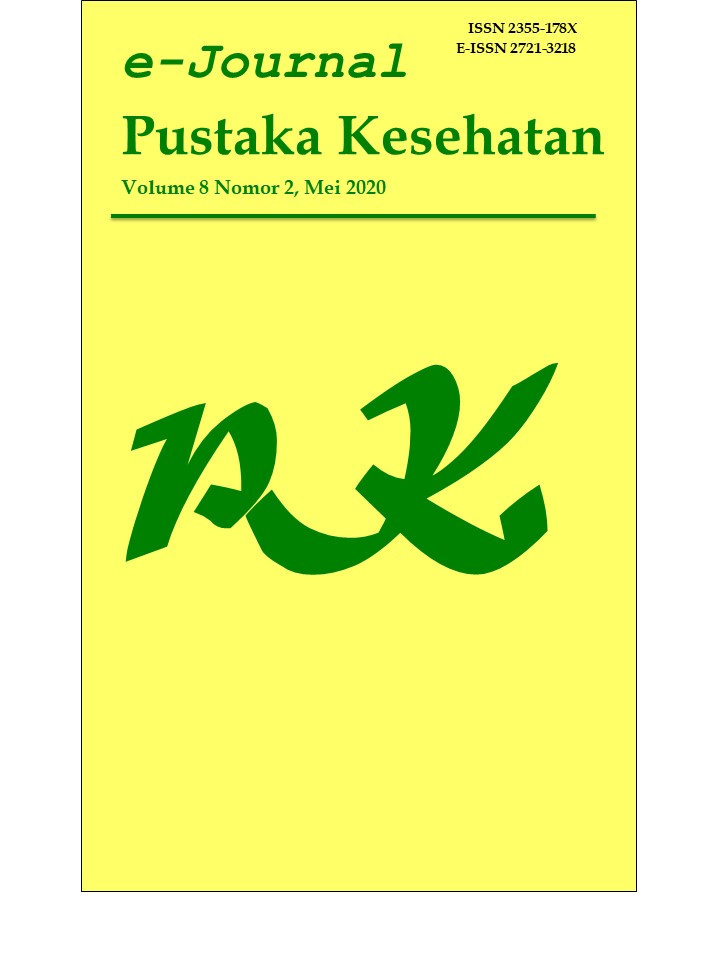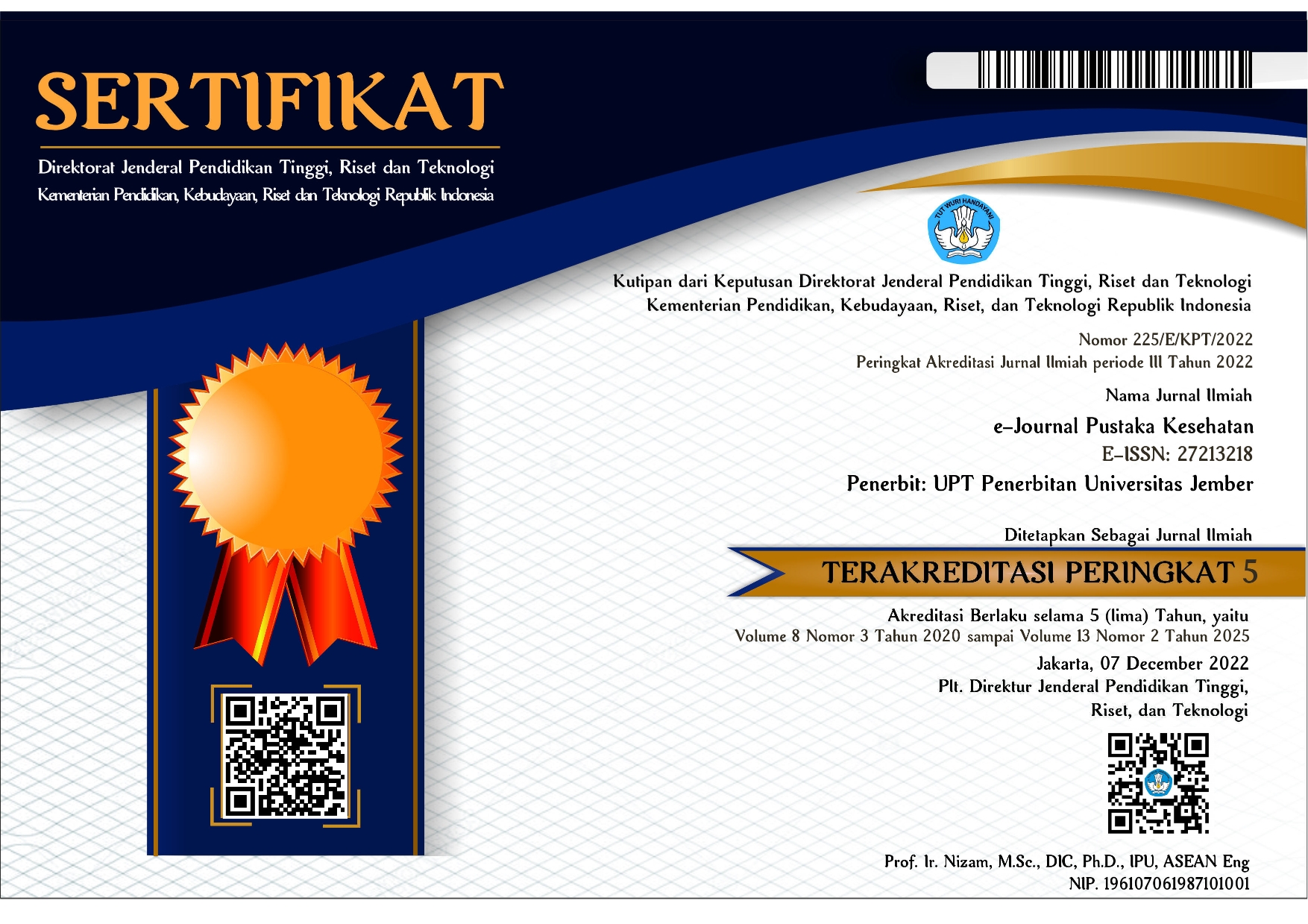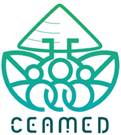Pengaruh Aplikasi Gliserin pada Kekerasan Resin Komposit Nanofiller dengan Perendaman Cuka Apel
DOI:
https://doi.org/10.19184/pk.v8i2.11322Keywords:
nanofiller composite resin, hardness, glycerin, apple cider vinegarAbstract
Composite resin is a type of filling material that is often used because it has good bonds with dentine and enamel and has a high aesthetic value. Nanofiller composite resin has high hardness, good polishing, color accuracy, and good translucency. The hardness of composite resins can change caused by low pH beverage. Purpose: To determine the differences in effect of glycerin application on hardness of nanofiller composite resins with immersion of apple cider vinegar. The type of research used was experimental laboratories with a pretest and post test group design. Samples were 24 immersion in apple vinegar for 60 and 120 minutes. Measurement of hardness using the Vicker Hardness Tester to determine the hardness value. Data analysis was performed using One Way Anova and Post-Hoc LSD tests.There is a significant difference in the value of composite resin hardness in the entire study group. The highest hardness value was found in the group with the application of glycerin and without immersion, while the lowest value was found in the group without the application of glycerin and immersion in 120 minutes.
Downloads
References
[1] Sari, G. G. P., Nahzi M. Y. I., dan Widodo. Kebocoran mikro akibat efek suhu terhadap pengerutan komposit nanohybrid. Dentino Jurnal Kedokteran Gigi. 2016. 1(2): 108-112.
[2] Anusavice, K. J. Phillips Buku Ajar Ilmu Bahan Kedokteran Gigi. Terjemahan oleh Johan Arief Budiman dan Susi Purwoko. 2006. Jakarta: EGC. Halaman 237-243.
[3] Zimmerli, B., Strub F., Franziska J., Oliver S., dan Adrian. Composite materials: composition, properties and clinical applications :A literature review. 2010. 120 (11): 972- 979.
[4] Hamouda, I.M., Hagag A.E., dan Manal F.B. Microleakage of Nanofiller Composite Resin Restorative Material. Journal of Biomaterials and Nanobiotechnology. 2011. 2: 329 – 334.
[5] Putriyanti, F., Ellyza H., dan Andi, S. Pengaruh saliva buatan terhadap diametral tensile strength micro fine hybrid resin composite yang direndam dalam minuman isotonic. Jurnal PDGI. 2012. 1(1): 43-47.
[6] Yolanda, D. Aripin, dan T. Hidayat. Comparison of surface roughness of nanofill and nanohybrid composite resin polished by aluminum oxide and diamond particle paste. Padjadjaran Journal of Dentistry. 2017. 29(2):123-129.
[7] Park, H.H dan In-Bog L. 2011. Effect of glycerin on the surface hardness of composite after curing. Journal of Korean of Conservative Dentistry. 36(6): 483-489
[8] Sitanggang, P., Tambunan E., dan Wuisan J. Uji kekerasan resin komposit terhadap rendaman buah jeruk nipis (citrus aurantifolia). Journal e-GiGi (eG). 2015. 3 (1): 229-234.
[9] Kalifa, R. F., Muh D. F., dan Arlina N. Pengaruh Jus Jeruk dan Minuman Berkarbonasi terhadap kekerasan permukaan resin komposit. ODONTO dental Journal. 2017. 4(1): 38 – 43.
[10] Atro, R. A., Periadnani dan Nurmiati. Keberadaan mikroflora alami dalam fermentasi cuka apel hijau (Malus sylvestris Mill.) Cultivars Granny Smith. Jurnal Biologi Universitas Andalas. 2015. 4 (3): 158 – 161.
[11] Morgan, J. dan Sapha M. The potential of apple cider vinegar in the management of type 2 diabetes. International Journal of Diabetes Research. 2016. 5 (6): 129-134.
[12] Adawiyah, R. Pengaruh Beda Media Pendingin pada Proses Hardening terhadap Kekerasan Baja Pegas Daun. Jurnal Poros Teknik. 2015. 7(1): 1-53.
[13] Kumayasari, M. F., dan Sultoni A. I. Studi Uji Kekerasan Rockwell Superficial VS Micro Vicker. Jurnal Teknologi proses dan Inovasi Industri. 2017. 2 (2): 85-89.
[14] Andari, E. S., Erawati W., dan Dwi M. C. R. 2014. Efek Larutan Kopi Robusta Terhadap Kekuatan Tekan Resin Komposit Nanofiller. Jurnal Kedokteran Gigi Unej. 11(1): 6-11.
[15] Istibsyaroh. 2015. Perubahan warna resin komposit nanofiller setelah perendaman dalam minuman susu fermentasi (penelitian in vitro). Skripsi. Jember: Fakultas Kedokteran Gigi Universitas Jember.
Downloads
Published
Issue
Section
License
e-Journal Pustaka Kesehatan has CC-BY-SA or an equivalent license as the optimal license for the publication, distribution, use, and reuse of scholarly work. Authors who publish with this journal retain copyright and grant the journal right of first publication with the work simultaneously licensed under a Creative Commons Attribution-ShareAlike 4.0 International License that allows others to share the work with an acknowledgment of the work's authorship and initial publication in this journal.







